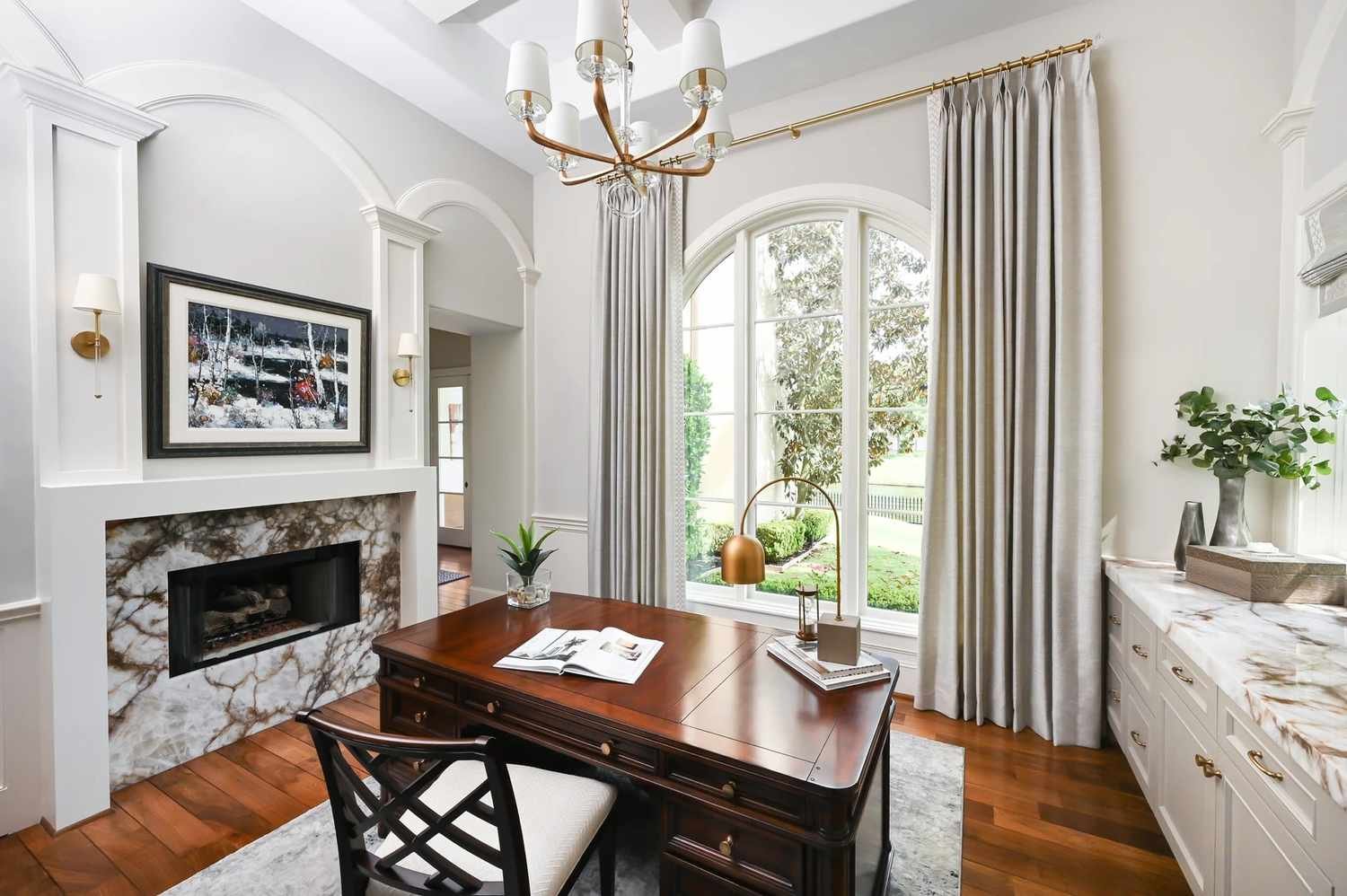Best Home Office Layout: Lighting Guide for Productivity
Creating the perfect home office layout is about more than just finding a spot for your desk. Lighting plays a crucial role in productivity, mood, and even how you appear on video calls. In this guide, we’ll dive into the best ways to optimize your home office layout with a focus on lighting—both natural and artificial. For a full guide to home office lighting check out our Ultimate Guide to Home Office Lighting!
1. Choosing the Right Spot: Harnessing Natural Light
Natural light is a game-changer for productivity and well-being. When planning your home office layout:
Position your desk near windows: Place your desk perpendicular to windows to avoid glare on screens while maximizing daylight exposure.
Avoid backlighting: Sitting with your back to a window can cause harsh shadows during video calls. Instead, face the window or have it to your side.
Filter bright light: Use light-filtering blinds or curtains to soften intense sunlight without blocking it completely.
2. Layered Lighting: A Balanced Approach
Relying solely on natural light isn’t practical, especially during cloudy days or late hours. A layered lighting approach ensures your workspace is well-lit at all times.
Ambient Lighting
This is your main source of light. Ceiling lights or wall-mounted fixtures can provide consistent illumination:
Opt for LED ceiling lights with adjustable brightness.
Use dimmer switches for flexibility based on the time of day.
Task Lighting
Focused lighting is essential for reading or detailed work:
Desk lamps with adjustable arms: Choose lamps with a color temperature between 4000K-5000K for a daylight-like effect.
Clamp-on lamps: Ideal for small desks as they save space while providing targeted light.
Accent Lighting
Enhance your workspace's ambiance:
LED strips under shelves or behind monitors add a professional touch.
Floor lamps in dark corners can brighten the room without being too harsh.
3. Avoiding Shadows and Glare
Nothing disrupts productivity like glare on your screen or harsh shadows. To minimize these:
Use indirect lighting: Bounce light off walls rather than directing it straight onto surfaces.
Anti-glare screens: An affordable way to reduce reflections from windows or lights.
Diffused lighting: Choose lamps with frosted covers to soften light.
4. Using Mirrors and Light Colors to Amplify Light
For offices with limited natural light, strategic decor can make a difference:
Mirrors: Position them to reflect window light deeper into the room.
Light-colored walls: Whites, pastels, and soft grays enhance brightness.
Glossy surfaces: Desks or decor with a subtle sheen can reflect light without causing glare.
5. Lighting for Video Calls: Looking Professional on Camera
Poor lighting can make you look shadowed or washed out during video calls. For a professional appearance:
Ring lights: Popular for video calls, they provide even lighting and reduce shadows.
Three-point lighting: Use a combination of key, fill, and backlighting for a well-lit look.
Natural light: If using window light, a sheer curtain can diffuse harsh sunlight for a softer appearance.
6. Best Lighting Options for Windowless Offices
If you’re working in a room without windows, lighting becomes even more crucial:
Full-spectrum LED lights: Mimic natural daylight to reduce eye strain.
Smart lighting systems: Allow you to adjust color temperature and brightness based on the time of day.
Wall-mounted sconces: Save desk space and spread light evenly across the room.
7. Practical Tips for Desk Placement and Productivity
Your desk position affects both lighting and productivity:
Face or side-light: Sitting perpendicular to light sources minimizes glare.
Corner desks: Utilize multiple light sources by positioning them in well-lit corners.
Clear the area around windows: Heavy furniture can block light flow.
Key Takeaways
Blend natural and artificial lighting: A mix of ambient, task, and accent lighting creates a balanced environment.
Strategic desk placement: Optimize for natural light without causing glare.
Invest in versatile lighting: Adjustable brightness and color temperatures enhance productivity and comfort.
By planning your home office layout with lighting in mind, you’ll create a workspace that not only looks great but also boosts productivity and comfort. For more guides flick through the Modish Haven Blog 💡






